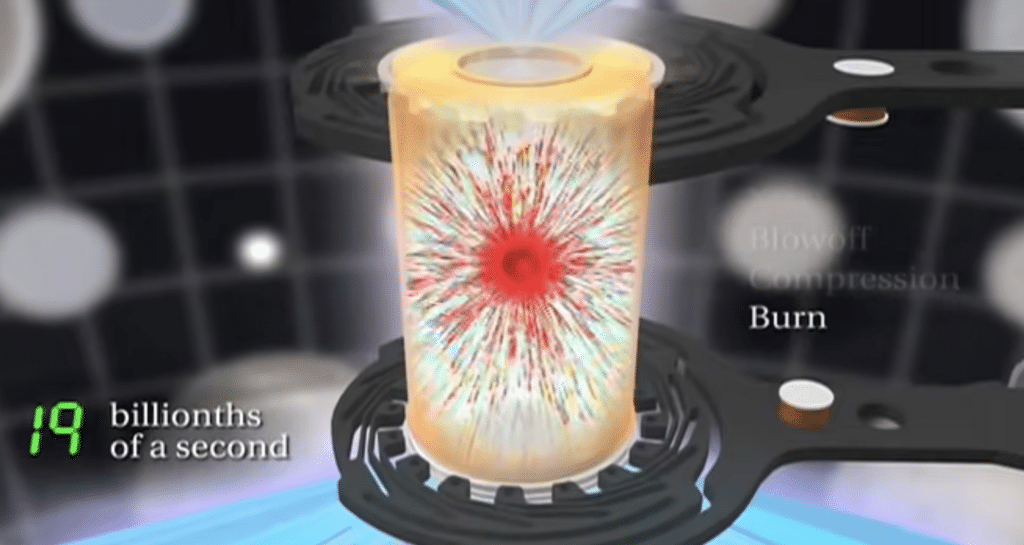Introduction – NIF Fusion Ignition And Net Energy Gain
Recently, the NIF declared an ignition event, meaning that the laser beams successfully triggered a self-sustaining fusion reaction. This is an important milestone in the development of ICF technology and may eventually lead to a practical, safe, and clean energy source. The NIF has not yet achieved a net energy gain from the reaction, which is the ultimate goal of the facility, but the success of the ignition event is a major step towards this goal.

Net Energy Gain Was Declared
The NIF also declared that it had achieved a net energy gain from its experiments, meaning that the energy produced by the fusion reaction was greater than the energy used to initiate it. This is a major milestone in the development of ICF technology and may eventually lead to a practical, safe, and clean energy source.
The NIF still has some way to go before it can produce a commercially viable energy source, but the success of the net energy gain is a major step towards this goal. The amount of energy going into the reaction was 2 megajoules, and the energy coming out was 3 megajoules. For readers of this site, know that 3 megajoules is about 1 kWh, which is a bit less than the energy needed to power a refrigerator for 1 day!
The NIF Is A Government Lab
The National Ignition Facility (NIF) is a large experimental laser-based inertial confinement fusion (ICF) facility located at the Lawrence Livermore National Laboratory in Livermore, California. It is the world’s largest and most energetic laser and is used to conduct experiments in ICF and high energy density physics. The NIF consists of 192 individual laser beams that are all focused onto a tiny target, resulting in extreme levels of energy and pressure. This energy and pressure are then used to compress nuclear fuel and trigger fusion reactions, allowing scientists to study the fusion process and potentially develop practical applications for ICF.
Inertial Confinement Fusion Is The Technology Used
Inertial confinement fusion (ICF) is a process where a fuel target is bombarded with multiple high-energy laser beams or particle beams. The intense energy of the beams causes the outer layer of the fuel target to rapidly heat and compress, resulting in fusion reactions that release large amounts of energy. ICF is being pursued as a potential clean and safe energy source.
Other types of fusion include magnetic confinement fusion and plasma focus fusion. Magnetic confinement fusion involves using powerful magnetic fields to contain the hot plasma fuel, while plasma focus fusion relies on a strong electric current to create a plasma arc that causes fusion reactions.
Magnetic Confinement Fusion Overshadowed
At present, magnetic confinement fusion was supposed to be the most advanced fusion technology. Magnetic confinement fusion has been studied and developed for decades, and it is the most mature of the fusion technologies. This technology has been used to power the Joint European Torus (JET) experimental reactor in the United Kingdom, and the International Thermonuclear Experimental Reactor (ITER) is under construction in France. What is surprising is that the inertial confinement method using lasers was the first to be self-sustaining and net energy positive.
Fusion Is A Carbon-Free Fuel Source
The basic significance of the NIF result is that nuclear fusion is a very exciting energy technology that overcomes problems of fossil fuels, renewables, and nuclear fission reactors.
Nuclear fusion is a process in which two or more atomic nuclei combine to form a single, heavier nucleus. This process releases large amounts of energy and is the same process that powers the Sun. As such, nuclear fusion is an attractive alternative to more traditional energy sources like fossil fuels and has the potential to provide a large amount of carbon emission-free energy with relatively few environmental impacts. This could be a key part of the global transition to a low-carbon future.
All nuclear power plants as of 2023 are based on nuclear fission. Nuclear fission is the process by which an atomic nucleus splits apart into two or more smaller nuclei. This process also releases large amounts of energy and is the same process used in nuclear power plants. Unlike nuclear fusion, however, nuclear fission releases radioactive materials as a by-product of the reaction, making it more dangerous and less desirable than nuclear fusion. In fact, there’s no uniform treatment of fission radioactive waste materials and many disputes arise because the waste products are dangerous for so long.
What To Expect For Commercialization

In order for inertial confinement fusion to become a commercial success, several key challenges still need to be addressed. These include increasing the efficiency of the fusion reaction, perfecting the design of the fuel target, and finding ways to reduce the cost of building and operating the laser system. Additionally, the safety and environmental impacts of the technology will need to be thoroughly evaluated before ICF can be used as a commercial energy source.

Anne Lauer
Anna Lauer is a writer, gardener, and homesteader living in rural Wisconsin. She has written for Mother Earth News, Grit, and Hobby Farms magazines. Anna is writing a new book about growing your food for free and an ultimate guide to producing food at little to no cost. When she’s not writing or gardening, Anna enjoys spending time with her husband and two young daughters.
